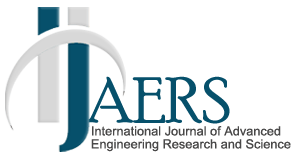Use of Waste Plastic in Concrete Mixture as Aggregate Replacement |
| ( Vol-3,Issue-12,December 2016 ) OPEN ACCESS |
| Author(s): |
Patil Pramod Sambhaji |
| Keywords: |
|
Waste Plastic, poly-ethylene terephthalate, Plastiphalt. |
| Abstract: |
|
One of the environmental issues in most regions of Iran is the large number of bottles made from poly-ethylene terephthalate (PET) deposited in domestic wastes and landfills. Due to the high volume of these bottles, more than 1 million m3 landfill spaces are needed for disposal every year. The purpose of this experimental study was to investigate the possibility of using PET waste in asphalt concrete mixes as aggregate replacement (Plastiphalt) to reduce the environmental effects of PET disposal. Concrete is the most widely used man made construction material in the w and its second only to water as the most utilized substance in the planet. Seeking aggregates for concrete and to dispose of the waste from various commodities is the present concern. Today sustainability has got top priority in construction industry. In the present study the recycled plastics were used to prepare the coarse aggregates thereby providing a sustainable option to deal with the plastic waste There are many recycling plants across the world, but as plastics are recycled they lose their strength with the number of recycling. So these plastics will end up as earth fill. In this circumstance instead of recycling it repeatedly, if it is utilized to prepare aggregates for concrete, it will be a boon to the construction industry. Most of the failures in concrete structures occur due to the failure of concrete by crushing of aggregates. Plastic aggregate which have low crushing values will not be crushed as easily as the stone aggregates. These aggregates are also lighter in weight compared to stone aggregates. Since a complete substitution for Conventional Aggregate was not found feasible, a partial substitution with various percentage of plastic aggregate was done. Both volumetric and grade substitution was employed in this investigation. |
|
|
| Paper Statistics: |
| Cite this Article: |
| Click here to get all Styles of Citation using DOI of the article. |
- Track Your Paper
- editor.ijaers@gmail.com
- ISSN : 2349-6495(P) | 2456-1908(O)



Advanced Engineering Research and Science